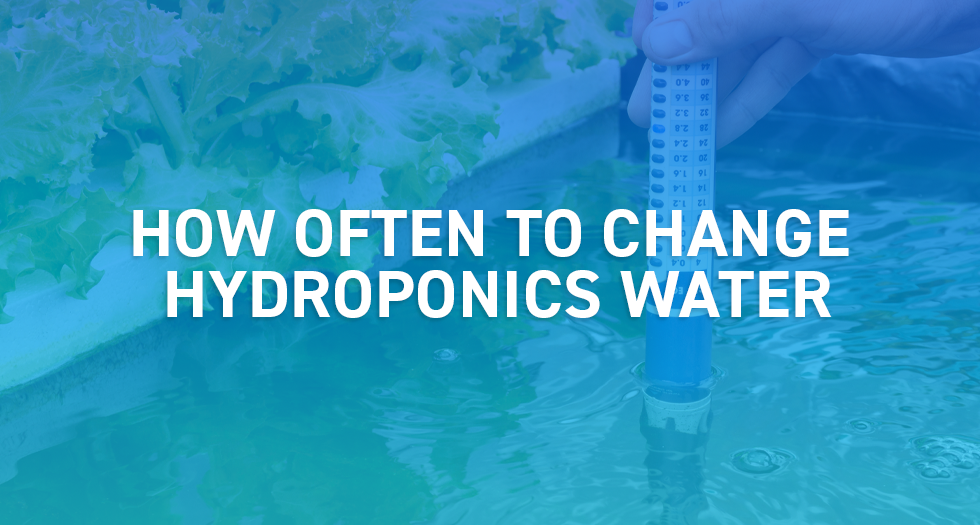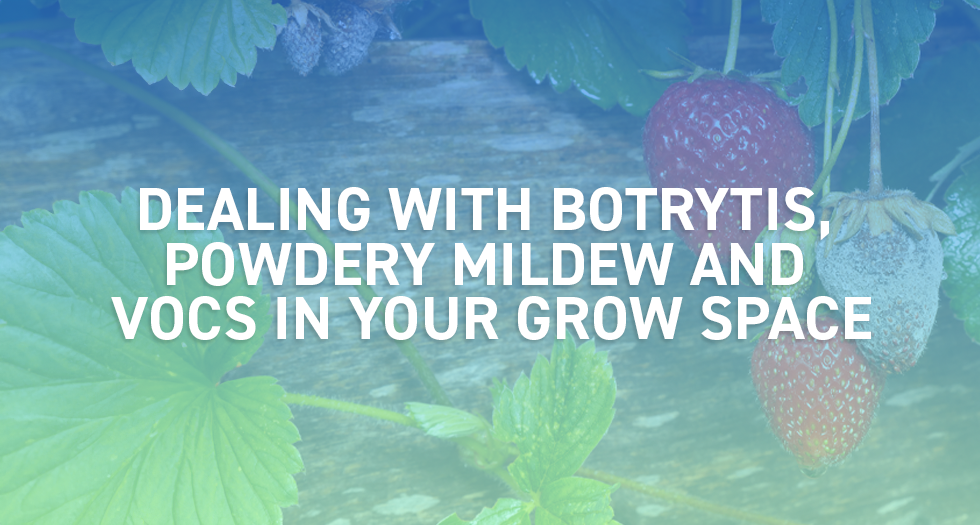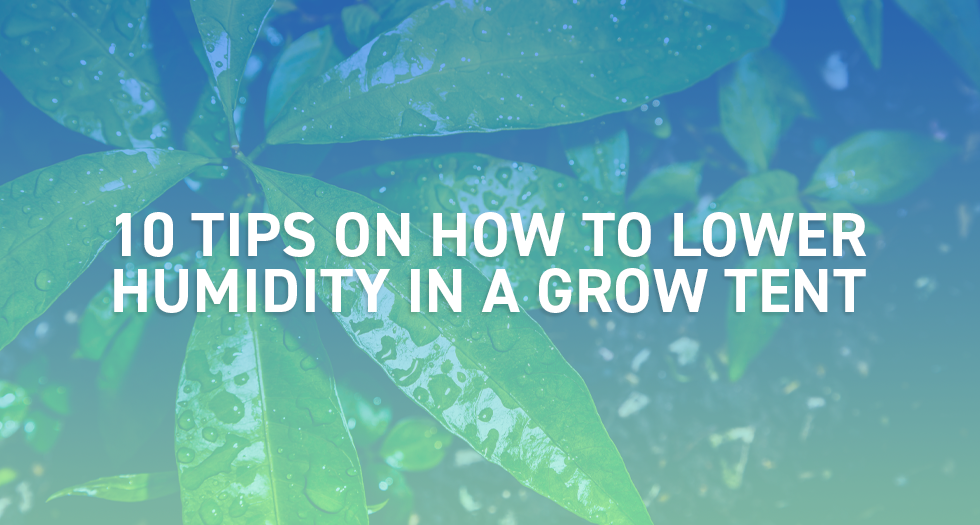The quality of water in a hydroponic system can impact growth and affect your harvest. It is essential that hydroponic growers closely monitor water quality to avoid issues such as stunted growth, nutrient deficiencies, and increased susceptibility to pests and disease. We discuss how to monitor your nutrient solution and how often to change your hydroponics water.
This article covers:
- Importance of Water Quality & What to Check
- Testing pH levels
- EC Test
- Temperature Monitoring
- Checks for Algae, Odour & Sediment
- Visual Plant Health Checks
- Determining the Right Time to Change Your Water
- How to Change Hydroponic Water
The Importance of Water Quality in Hydroponics & What to Check
Managing water quality ensures the right balance of nutrients and pH levels. Good quality water can help to prevent issues such as nutrient burn or deficiencies, algae growth, and the buildup of excess salts and toxins that can damage plant roots and impact other biological processes. Not only this, but plants exposed to poor water quality will become more of a target for pests and disease.
Conducting regular checks such as monitoring pH and EC, and changing the water when necessary, will give you the best chance of a successful crop and harvest. Growers should perform the following checks regularly to ensure a healthy system:
pH Level Check
The pH of the water (level of acidity/alkalinity) needs to be within the correct range for the plants you are growing. The ideal pH range will depend on your plants but generally it falls between 5.5 to 6.5.
If the pH is not within the ideal range for the plant, it can cause a number of issues. These include problems with nutrient uptake, toxicity, and increased levels of heavy elements like manganese and aluminium. It can also weaken the immune system, increase the risk of pests and disease, cause root damage, poor foliage, and overall stunted growth.
Luckily, testing the pH is easy with the help of a digital pH tester or probe like the Aqua Master pH pen. This handheld tool measures both pH and water temperature. It will help you determine if you are giving your plants the best conditions for mineral uptake.
Another simple way to test pH is by using special strips. Dip the strip into the solution and it will change colour to indicate the pH level. You can compare the colour to a chart to determine the pH of the water.
Electrical Conductivity (EC) Check
In hydroponics, nutrients typically come in the form of water-soluble salts. When the salts dissolve in water, they separate into ions. Ions have the ability to conduct electricity due to their positive and negatively charged particles. An Electrical Conductivity (EC) check measures the salt concentration in your hydroponic nutrient solution, and therefore indicates the concentration of nutrients within the solution.
A high EC reading indicates that the solution has a high concentration of nutrients. Likewise, a low EC reading indicates fewer nutrients. This check helps you to determine if your plants are receiving the right amount of nutrients for optimal growth. The ideal EC will depend on the plants you are growing.
Checking EC is quick and simple with an EC probe like the Aqua Master E50 Pro EC Temp Meter.
Temperature Monitoring
If the nutrient solution in a hydroponic set up is too hot or cold, it can lead to various problems. Regular temperature monitoring is vital to prevent stress and risk of disease.
- Too Hot: If the water is too warm, oxygen levels can decline. This can lead to problems like root stress and vulnerability to root diseases. High temperatures can also encourage the growth of harmful bacteria and algae. Poor plant health caused by a warm nutrient solution can also indirectly attract pests. This is because the warmer environment can create favourable conditions where pests will thrive.
- Too Cold: Cold temperatures can slow down plant metabolism and root function. This can lead to stunted growth and reduced oxygen and nutrient uptake. Extremely cold water can even damage plant roots.
So, what’s the ideal temperature for a hydroponic nutrient solution? As a general rule, you should aim for between 18°C to 22°C, but check the specifics for your plant species to be certain. Maintaining the nutrient solution within the perfect range helps to ensure optimal nutrient uptake, oxygen availability, and overall plant health.
Measuring water temperature is easy with a thermometer. If you find your water is too hot you can use a water chiller to cool it down to the right levels. If your water is too cold, a simple nutrient heater can be used to heat it up. This will help to prevent your plants’ metabolism from slowing down.
Check for Algae, Odour & Sediment
The presence of algae, odour and sediment will indicate if you have an issue with your water quality. Algae growth can deplete essential oxygen levels in the water and create a favourable environment for harmful pathogens. It can also clog filters and pipes, reducing the efficiency of your system. Sediment can also cause build-up and blockages in the system.
Unpleasant odours are a red flag for bacterial growth or decay. These symptoms signal potential water quality problems that could harm the health of your plants.
Regular Visual Checks for Plant Health
Performing regular visual plant inspections is an essential aspect of plant cultivation. Unhappy plants are easy to spot. So, if your plants look wilted, discoloured, diseased or infested, this could signal issues with your hydroponic water quality.
Such symptoms can indicate incorrect nutrient levels, pH imbalances, or dirty water. Leaves turning yellow or brown, especially at the tips, may be a sign of nutrient deficiencies or toxicity. Stunted growth or twisted foliage can signal problems with the water temperature or oxygen levels.
Regular observation of your plants' visual health and growth patterns allows for early detection of manifesting problems. Catching issues early gives you a chance to adjust your system before problems worsen and have the potential to devastate your crop.
Determining the Right Time to Change your Hydroponic Water
If your water quality checks flag problems such as smelly water, improper EC, pH and temperature levels, and the presence of algae and sediment, it's time to change your water.
Even if you don’t notice any obvious issues, as a general rule of thumb hydroponic water should be typically changed every two to three weeks. No matter if your water appears fresh and clear, over time pathogens can accumulate and nutrient imbalances can occur. Consistency in water quality is the key to a successful hydroponic garden.
How To Change Your Hydroponic Water
Our step by step walkthrough on how to change your hydroponic water is intended as a general guide. Always ensure you follow any specific instructions that relate to your specific hydroponic equipment.
- Prepare New Nutrient Solution: Before you begin to change the water, prepare the new nutrient solution so it is ready to use. When mixing nutrients with water, always refer to the manufacturer's instructions. Adjust the pH and EC of the new solution to the correct range for your indoor plants. Read more about mixing nutrients in our blog post here.
- Turn Off the Hydro System: Turn off any pumps or any electrical components before proceeding.
- Drain Old Nutrient Solution: Using a pump, syphon, or drain valve, carefully drain the old nutrient solution from your hydro system. Ensure to dispose of it responsibly and according to the manufacturer’s instructions.
- Clean the Hydroponics System: Once the old solution is drained, check for any algae growth, sediment, and debris. Carefully clean the reservoir, pipes, drippers, and other components to remove any dirt build-up. Pipe cleaners are good for cleaning pipes in small systems. For larger commercial hydroponic setups you may need to invest in specialist tools.
If your system is very dirty, you can use diluted hydrogen peroxide to clean it without harming your plants. Plant friendly duct cleaners like Idrolab Total Care are ideal for keeping your irrigation system in optimal condition and free from blockages. This cleaner prevents the build-up of bacterial slime and algae, and will also help to prevent fungi growth.
- Refill Reservoir with New Nutrient Solution: After cleaning your hydro system, fill your reservoir with your freshly prepared nutrient solution.
- Turn the System Back On: Turn on the pump and any other electrical components as needed.
- Double Check the Water Quality. After refilling your system, double check the pH and EC levels again, and make any necessary adjustments. Remember to keep a close eye on your plants over the next few days to ensure they are adapting well to the new solution.
Conclusion
Changing your hydroponics water is essential for maintaining a healthy system in which your plants will flourish. To recap, you should perform various water quality checks to monitor EC and pH levels, nutrient solution temperature, bad odours, dirt build-up, and algae. Maintaining a healthy hydroponic garden ensures optimal plant growth and yield by providing balanced nutrients, ideal pH, and a disease-free environment.




